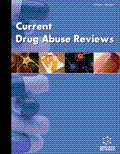Abstract
We reviewed the cognitive and neurobiological commonalities between chemical and behavioral addictions. Poor impulse control, limited executive function and abnormalities in reward processing are seen in both group of entities. Brain imaging shows consistent abnormalities in frontoparietal regions and the limbic system. In drug addiction, exaggerated risk taking behavior and temporal discounting may reflect an imbalance between a hyperactive mesolimbic and hypoactive executive systems. Several cognitive distortions are found in pathological gambling that seems to harness the brain reward system that has evolved to face situations related to skill, not random chance. Abnormalities in risk assessment and impulsivity are found in variety of eating disorders, in particularly related to eating behavior. Corresponding findings in eating disorder patients include abnormalities in the limbic system, i.e. orbitofrontal cortex (OFC), striatum and insula. Similarly, internet addiction disorder is associated with risky decision making and increased choice impulsivity with corresponding discrepant activation in the dorsolateral prefrontal cortex, OFC, anterior cingulate cortex, caudate and insula. Sexual addictions are in turn associated with exaggerated impulsive choice and suggestive evidence of abnormalities in reward processing. In sum, exploration of executive function and decision making abnormalities in chemical and behavioral addictions may increase understanding in their psychopathology and yield valuable targets for therapeutic interventions.
Keywords: Addiction, behavioral addictions, cognitive control, decision making, reward, temporal discounting.
 65
65 3
3















